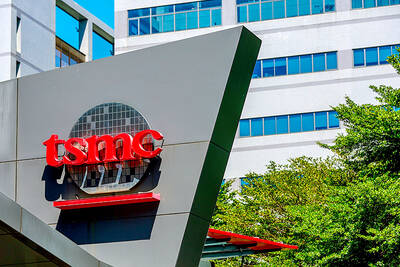The WTO made public its first official condemnation of Chinese commercial practices on Friday, releasing a February ruling that sided with the US, the EU and Canada in a dispute over car parts.
The verdict — findings of which were obtained by the Associated Press five months ago — found that China was breaking trade rules by taxing imports of auto parts at the same rate as foreign-made finished cars.
In the sweeping decision, the three-member WTO panel ruled against China on nearly every point of contention with the US, the 27-country EU and Canada.
The panel found that Chinese measures “accord imported auto parts less favorable treatment than like domestic auto parts” or “subject imported auto parts to an internal charge in excess of that applied to like domestic auto parts.”
“The dispute settlement body requests China to bring these inconsistent measures as listed above into conformity with its obligations,” it said.
The three trade powers argued that the tariff was discouraging automakers from using imported car parts for the vehicles they assemble in China. As a result, car parts companies had an incentive to shift production to China, costing Americans, Canadians and Europeans their jobs, they said.
The dispute has likely been closely watched by makers of everything from batteries and brakes to seats and spark plugs on both sides of the Atlantic, including US-based Delphi Corp, a former parts supplier to General Motors, and Robert Bosch GmbH in Germany.
China, which can still appeal, claims the tariffs are intended to stop whole cars being imported in large chunks, allowing companies to avoid the higher tariff rates for finished cars. It argues that all measures are fully consistent with WTO rules and do not discriminate against foreign auto parts.
But the US and the EU say that China promised not to treat parts as whole cars when it joined the WTO in 2001.
“In all major respects, the panel has agreed with the United States that China has acted inconsistently with its WTO commitments,” the Office of the US Trade Representative said in February.
China’s trade boom has caused friction with Europe and the US as their trade deficits with the Asian country have grown.
This dispute, launched in 2006, marked the first time Western allies teamed up to seek a formal WTO investigation of China’s trade practices.
China’s car-making market has grown rapidly and it is now third in auto sales after the US and Japan. However, manufacturers have to source 40 percent of parts by value in China to avoid the tax and foreign makers of parts have only recently started to keep pace with the overall growth in the Chinese market.
The US exported US$840 million in auto parts worth to China in the first nine months of last year, up 38 percent from the same period a year earlier, according to the US Commerce Department.
European carmakers have about 25 percent of the car production market in China. Figures provided in 2006 put its auto parts exports to China at about US$4.75 billion annually.

RUN IT BACK: A succesful first project working with hyperscalers to design chips encouraged MediaTek to start a second project, aiming to hit stride in 2028 MediaTek Inc (聯發科), the world’s biggest smartphone chip supplier, yesterday said it is engaging a second hyperscaler to help design artificial intelligence (AI) accelerators used in data centers following a similar project expected to generate revenue streams soon. The first AI accelerator project is to bring in US$1 billion revenue next year and several billion US dollars more in 2027, MediaTek chief executive officer Rick Tsai (蔡力行) told a virtual investor conference yesterday. The second AI accelerator project is expected to contribute to revenue beginning in 2028, Tsai said. MediaTek yesterday raised its revenue forecast for the global AI accelerator used

Taiwan Semiconductor Manufacturing Co (TSMC, 台積電) has secured three construction permits for its plan to build a state-of-the-art A14 wafer fab in Taichung, and is likely to start construction soon, the Central Taiwan Science Park Bureau said yesterday. Speaking with CNA, Wang Chun-chieh (王俊傑), deputy director general of the science park bureau, said the world’s largest contract chipmaker has received three construction permits — one to build a fab to roll out sophisticated chips, another to build a central utility plant to provide water and electricity for the facility and the other to build three office buildings. With the three permits, TSMC

The DBS Foundation yesterday announced the launch of two flagship programs, “Silver Motion” and “Happier Caregiver, Healthier Seniors,” in partnership with CCILU Ltd, Hondao Senior Citizens’ Welfare Foundation and the Garden of Hope Foundation to help Taiwan face the challenges of a rapidly aging population. The foundation said it would invest S$4.91 million (US$3.8 million) over three years to foster inclusion and resilience in an aging society. “Aging may bring challenges, but it also brings opportunities. With many Asian markets rapidly becoming super-aged, the DBS Foundation is working with a regional ecosystem of like-minded partners across the private, public and people sectors

BREAKTHROUGH TECH: Powertech expects its fan-out PLP system to become mainstream, saying it can offer three-times greater production throughput Chip packaging service provider Powertech Technology Inc (力成科技) plans to more than double its capital expenditures next year to more than NT$40 billion (US$1.31 billion) as demand for its new panel-level packaging (PLP) technology, primarily used in chips for artificial intelligence (AI) applications, has greatly exceeded what it can supply. A significant portion of the budget, about US$1 billion, would be earmarked for fan-out PLP technology, Powertech told investors yesterday. Its heavy investment in fan-out PLP technology over the past 10 years is expected to bear fruit in 2027 after the technology enters volume production, it said, adding that the tech would